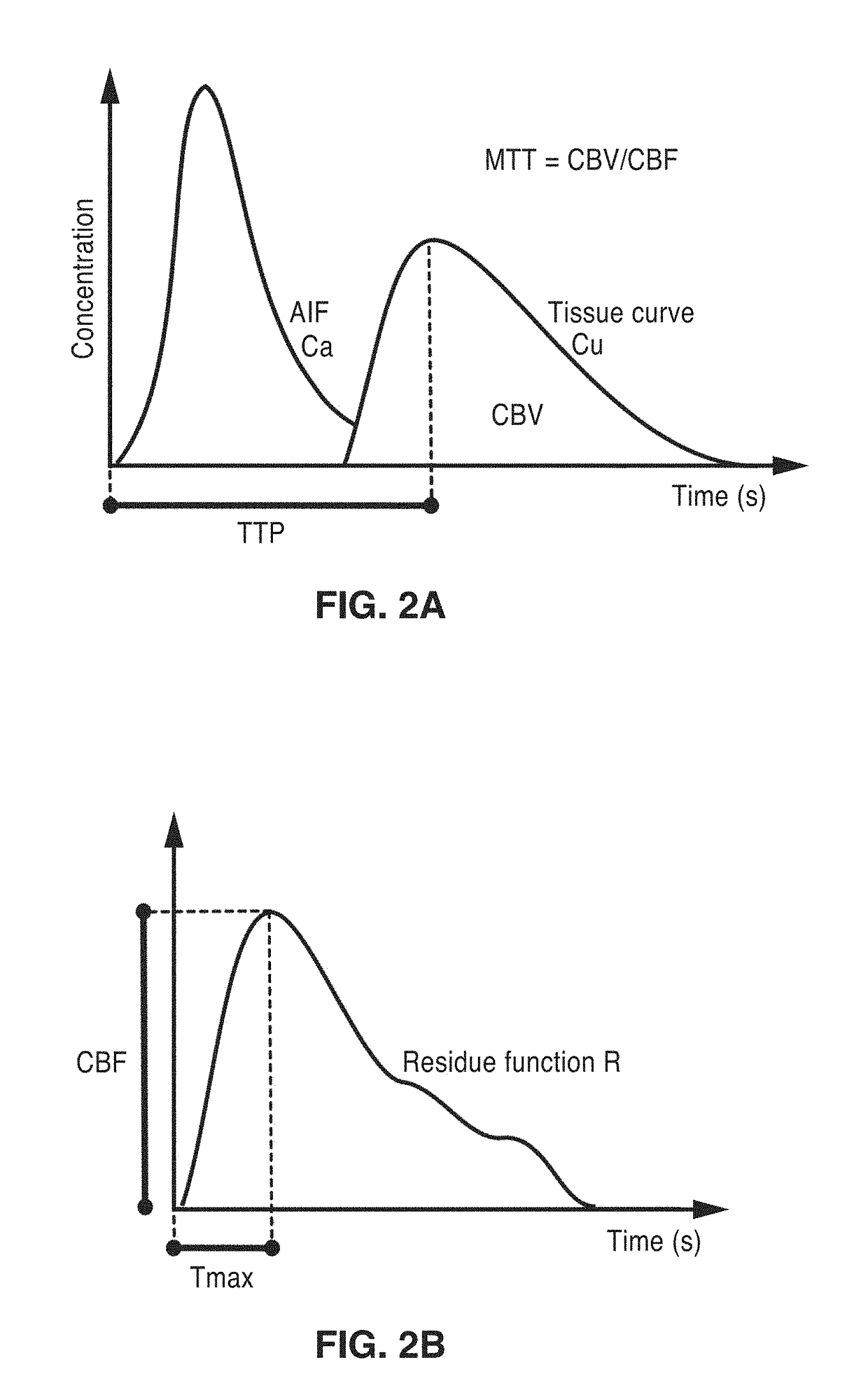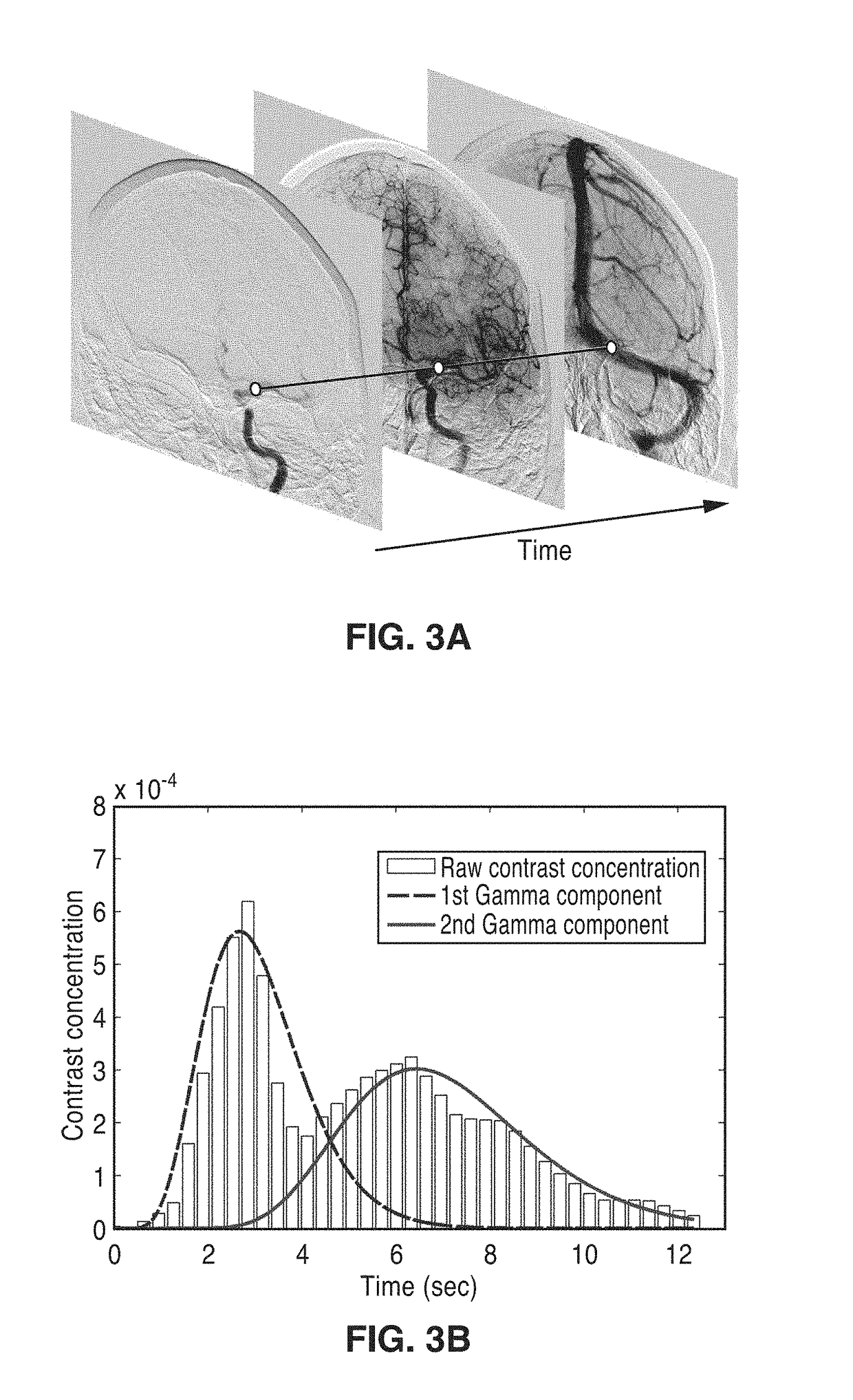Perfusion digital subtraction angiography
a technology of perfusion and subtraction angiography, applied in the field of diagnostic imaging devices and methods, can solve problems such as different interpretation of perfusion dsa, and achieve the effect of improving patient outcomes
- Summary
- Abstract
- Description
- Claims
- Application Information
AI Technical Summary
Benefits of technology
Problems solved by technology
Method used
Image
Examples
example 1
[0085]To demonstrate the operational principles of the perfusion angiography framework and parametric imaging methods, data was collected from patients evaluated at a single, academic comprehensive stroke center and identified with symptoms of acute ischemic stroke. A total of 66 patients (median age: 68 years, including 35 women, satisfied the study criteria.
[0086]Source DSA images of each patient were processed with the perfusion angiography framework described in FIG. 1. The concentration time-curve of the arterial input function (AIF) (Ca) required for the computation of perfusion maps was obtained by extracting the average of the DSA values comprised within a region of interest (ROI) at each time point that was arbitrarily selected. In this illustration, the ROI was set on the intracerebral artery (ICA) as an elliptical region fully included in the vessel.
[0087]The capability of the method of extracting and calculating various parameters from the raw source DSA images and the e...
example 2
[0096]To further test the functionality of the methods, the perfusion angiography methods were applied to the dataset composed of DSA sequences following endovascular thrombectomy recorded on acute ischemic stroke patients with MCA occlusion. The tests are formulated such that the distribution of a given perfusion parameter across the MCA territory was averaged and studied with respect to the TICI score.
[0097]Statistical measurements of correlation and dispersion were then performed. Source DSA images of each patient were processed with perfusion angiography. The concentration-time curve of the arterial input function (AIF) Ca required for the computation of perfusion maps was obtained by extracting the average of the DSA values comprised within a region of interest (ROI) at each time point.
[0098]The perfusion angiography was conducted using the BIC criterion to select among a maximum of two Gamma components to differentiate between the arterial and the venous phase. After processin...
PUM
 Login to View More
Login to View More Abstract
Description
Claims
Application Information
 Login to View More
Login to View More - R&D
- Intellectual Property
- Life Sciences
- Materials
- Tech Scout
- Unparalleled Data Quality
- Higher Quality Content
- 60% Fewer Hallucinations
Browse by: Latest US Patents, China's latest patents, Technical Efficacy Thesaurus, Application Domain, Technology Topic, Popular Technical Reports.
© 2025 PatSnap. All rights reserved.Legal|Privacy policy|Modern Slavery Act Transparency Statement|Sitemap|About US| Contact US: help@patsnap.com



